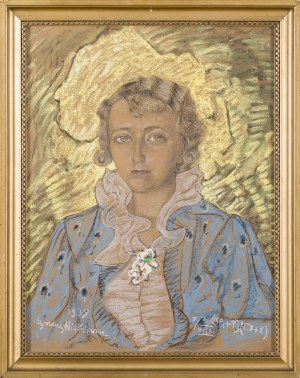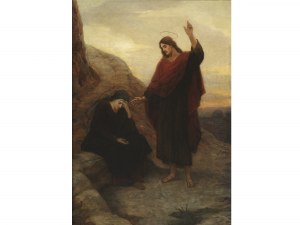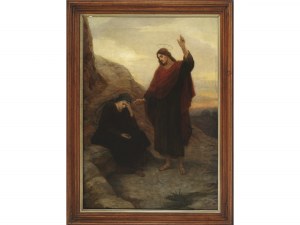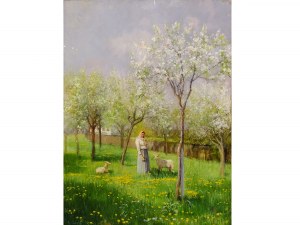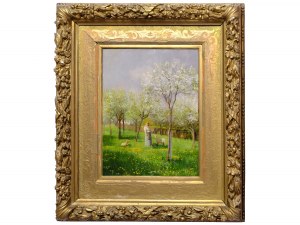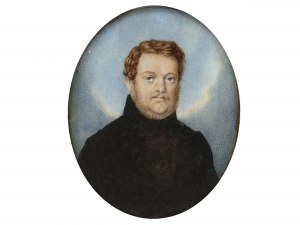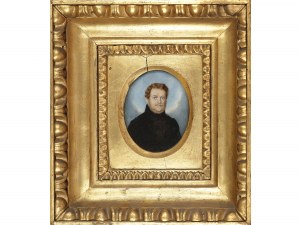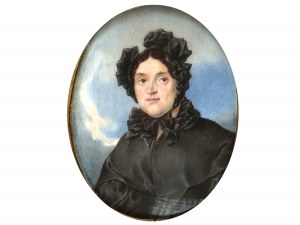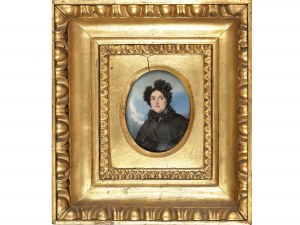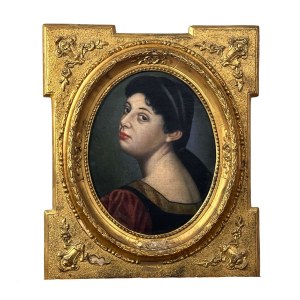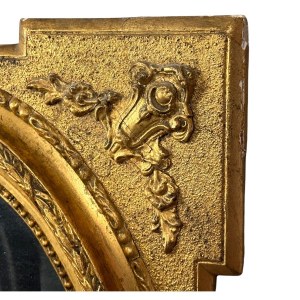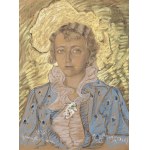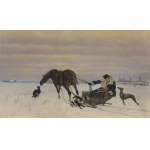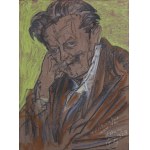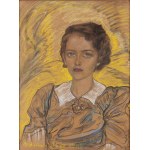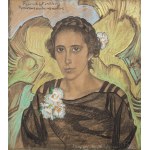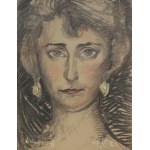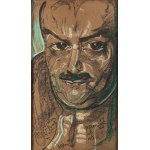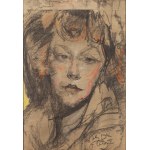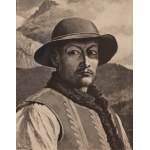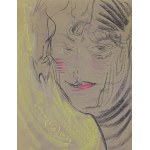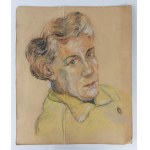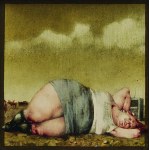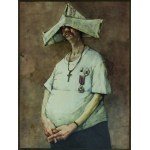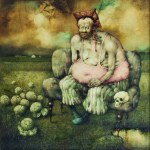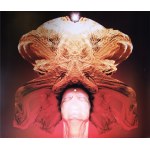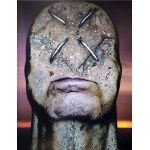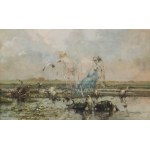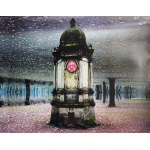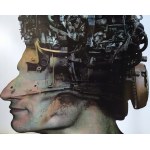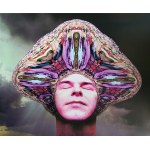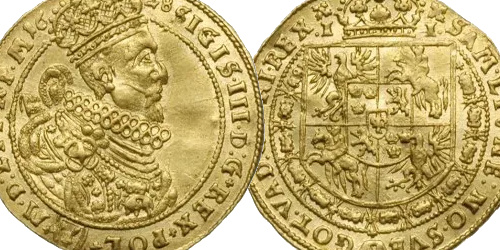69.2 x 49.0cm - pastel, brown paper signed at bottom: S.I. Witkiewicz NP4.5 + crest; beside, right: (T.B) / 1933 VIII
* border VAT 8% will be added to the auctioned price in addition to other costs (in accordance with §12 item 2 of the Rules).
The painting is accompanied by an expert report by Dr. Anna Żakiewicz dated February 2023.
From the beginning of his creative activity, the artist betrayed a special talent for portraiture, which over time, along with literary works and philosophy, became his main occupation, in which he achieved mastery. In 1925. Witkacy formalized this activity by founding the Portrait Company "S.I. Witkiewicz" and formulated its Rules and Regulations, in which he divided the portraits performed into five types, marked with consecutive letters from A to E, depending on the convention adopted and agreed upon with the client. Type B was a distinctive type, but without the shadow of caricature [...] not excluding "prettiness" in female portraits. Relationship to the model objective.
The portrait of Mrs. Aliza belongs to type B and fully realizes the above assumptions. The model is portrayed realistically, with skillful extraction of her classical beauty, which we can easily see by comparing her portrait with a photograph. The artist enlarged her blue eyes, contoured the shape and slightly reduced the red lips, repeated the thin arches of her eyebrows, smoothed her complexion, slightly corrected the oval of her face and slightly lengthened her neck. He precisely recreated a hairstyle in line with the fashion of the time from carefully curled and pinned curls. Thanks to these procedures, the woman certainly gained in beauty, but this did not disturb the fidelity of the portrait. The background, outlined with yellow lines, does not disturb the whole, but contrasts nicely with the model's navy blue blouse tied at the neck with a coral ribbon in white peas.
Mrs. Aliza probably did not count herself among the artist's close acquaintances, hence the official version of the signature - S.I. Witkiewicz, not Witkacy, although on one of the portraits taken almost a year earlier, in October 1938, the artist wrote that Witkacy died on 20/VIII/1938, and since then he actually stopped using his pseudonym even on portraits of friends. Another interesting piece of information is the NP4.5 annotation, based on which we can precisely determine the time of the portrait's creation as August 10-11, since one of the artist's self-portraits dated August 11, 1939, contains an NP5 entry indicating that the author had not smoked cigarettes for five days. Hence the simple conclusion that the image of Mrs. Aliza was started the day before and completed the next day. Witkacy added to this information the abbreviation herb. meaning tea, which was his favorite drink. As he reported to his wife at the time (August 13, 1939): There's a portrait raid - I draw cheaply, but a lot (see S.I. Witkiewicz, Letters to his wife (1936 -1939), ed. J. Degler, Warsaw 2012, p. 279). Unfortunately, not much has survived from this "aisle". In addition to the portrait of Mrs. Aliza, we know of only 10 portraits taken in August 1939 and two self-portraits. This is very little, since we know that Witkacy was able to create dozens of them in a month. All the more valuable is the appearance on the market of another work from that time, unusual in its beauty. The portrait left with Holocaust survivor Aliza after World War II for Bat Yam near Tel Aviv, Israel, and only returned to the country more than 70 years later.
According to the expert opinion of Dr. Anna Żakiewicz
Stanisław Ignacy Witkiewicz (Warsaw 1885 - Jeziory in Volhynia 1939) was educated at home under his father, Stanisław Witkiewicz. In 1903 he passed his high school diploma in Lviv. In 1904 he began traveling, including to Vienna, Italy, Munich, Paris and London. From 1904 to 1910 he studied at the Academy of Fine Arts in Cracow with Prof. Jozef Mehoffer, interrupted by periods of study with Władysław Ślewiński. In 1914 he left with Bronislaw Malinowski's expedition to Australia, and from there went directly to St. Petersburg, where he enlisted in the Russian army after the outbreak of WWI. In Russia, he witnessed the Bolshevik Revolution.
After returning to the country in 1918, he became a member of the "Formists" group, with which he exhibited from 1918 to 1922. In the painting of this period, he came closest to putting into practice his own theory of Pure Form, formulated during the war (it also applied to drama). Along with Leon Chwistek, he was the main theoretician of the grouping. After 1924, he operated as a one-man "S. I. Witkiewicz Portrait Company'' making portraits on commission. At the same time, he continued his literary (dramas, novels) and philosophical work, but above all he practiced the "art of living" that united all forms of his activity, appreciated only at the end of the 20th century. He committed suicide at the beginning of World War II, the day after the Soviet aggression against Poland.
Recently viewed
Please log in to see lots list
Favourites
Please log in to see lots list



![Stanislaw Ignacy Witkiewicz, PORTRET ALIZA LANGROT, [10-11] August 1939](https://img1.one.bid/img/4725/1240125_1q.jpg?1679252384)
![Stanislaw Ignacy Witkiewicz, PORTRET ALIZA LANGROT, [10-11] August 1939](https://img1.one.bid/img/4725/1240125_2w.jpg?1679252384)
![Stanislaw Ignacy Witkiewicz, PORTRET ALIZA LANGROT, [10-11] August 1939](https://img1.one.bid/img/4725/1240125_3w.jpg?1679252384)
![Stanislaw Ignacy Witkiewicz, PORTRET ALIZA LANGROT, [10-11] August 1939](https://img1.one.bid/img/4725/1240125_4w.jpg?1679252384)








